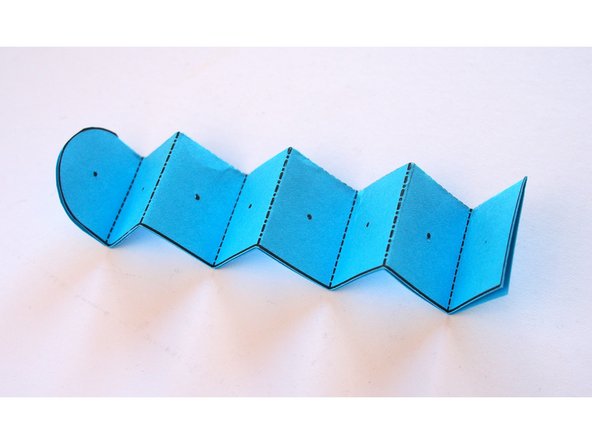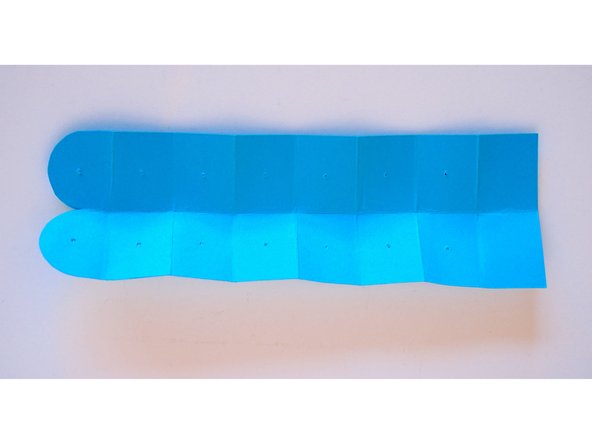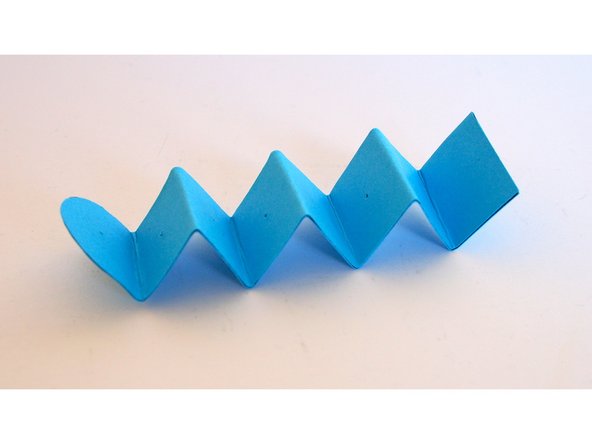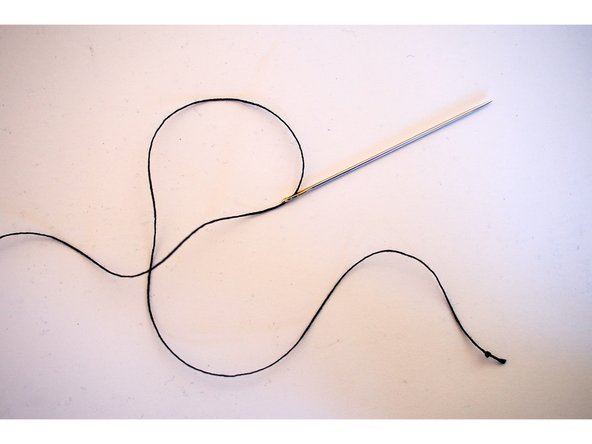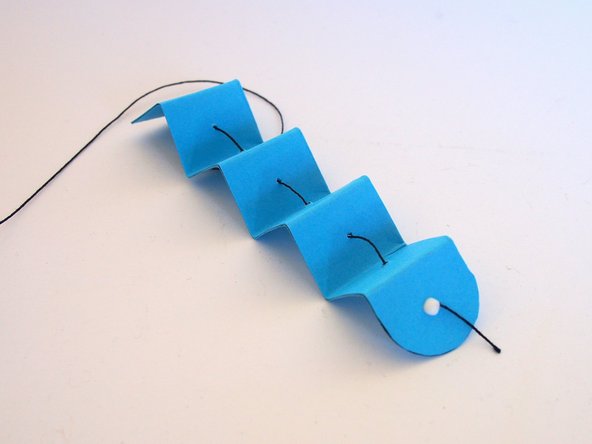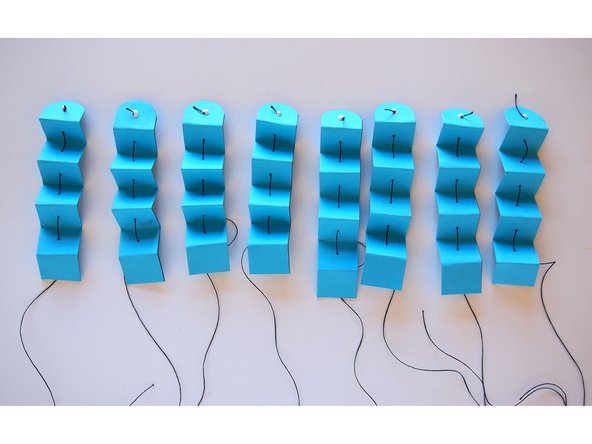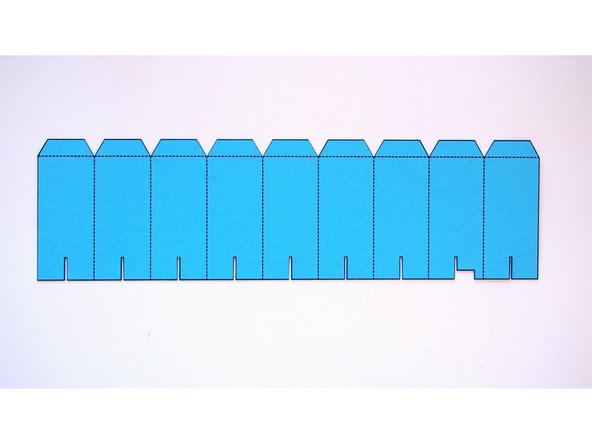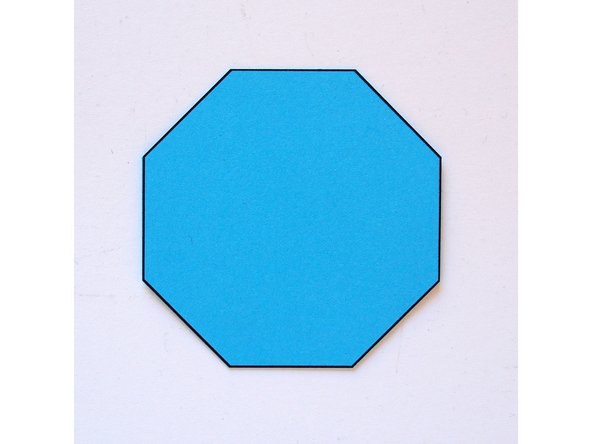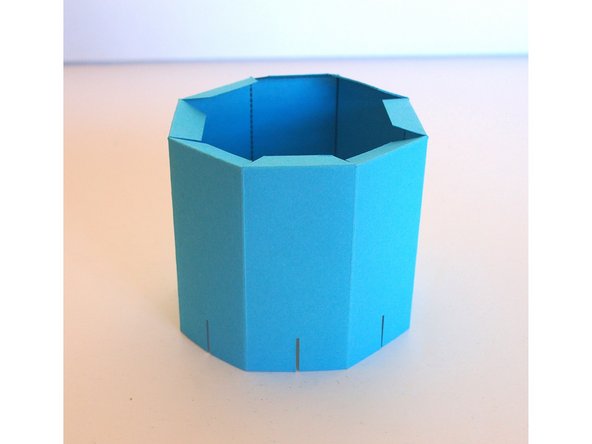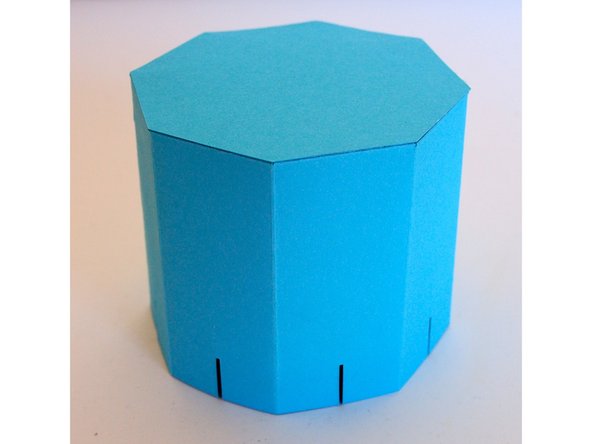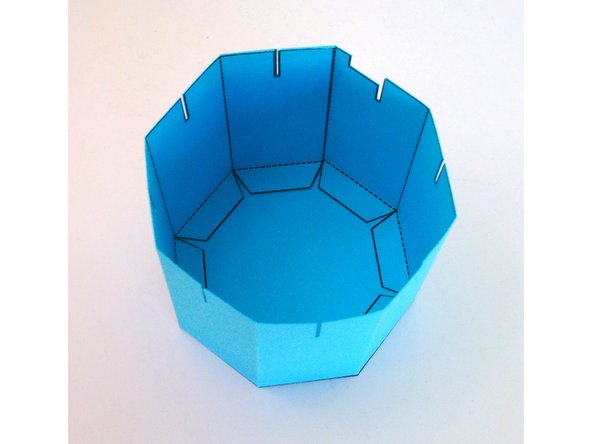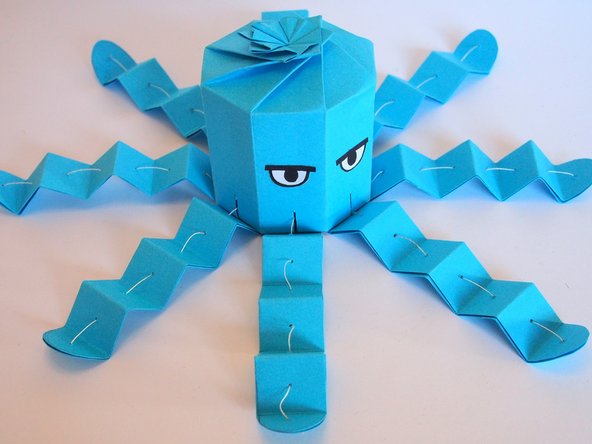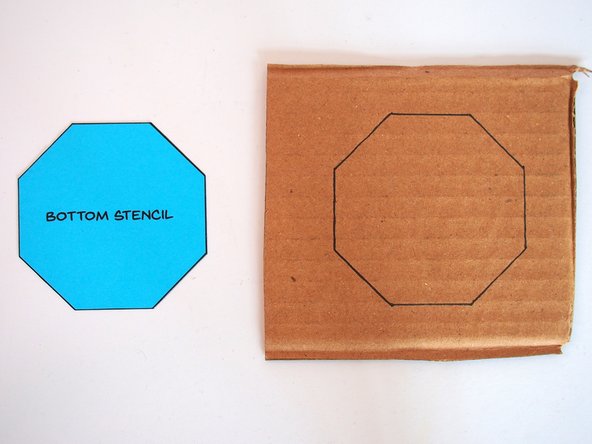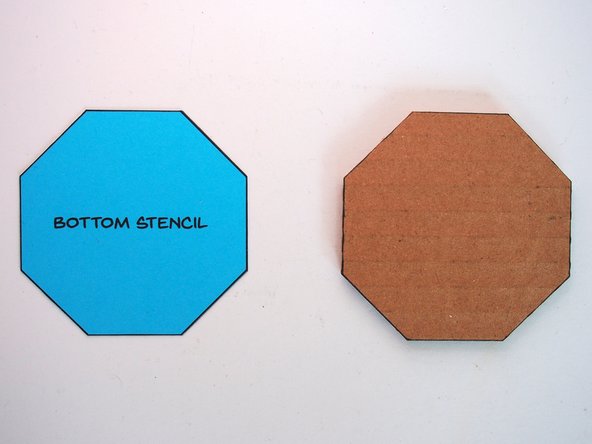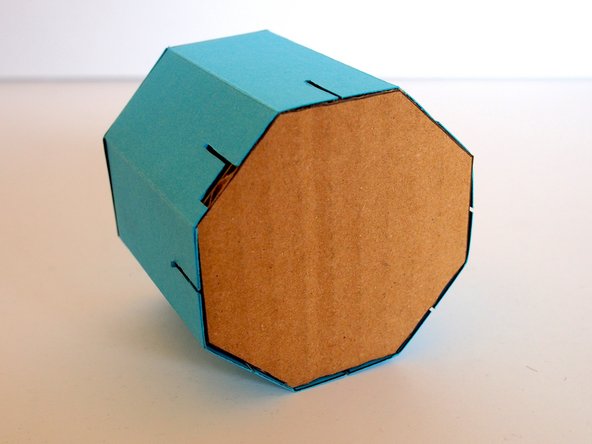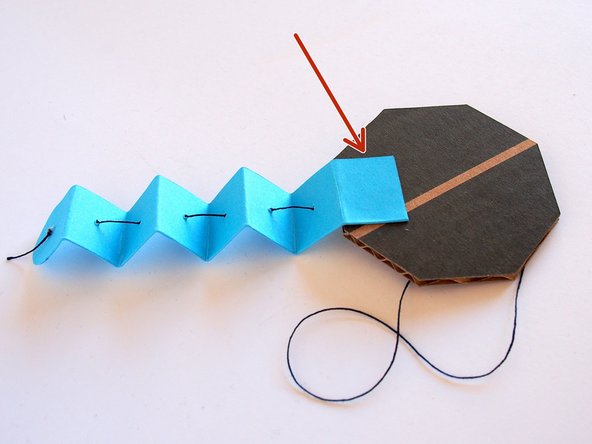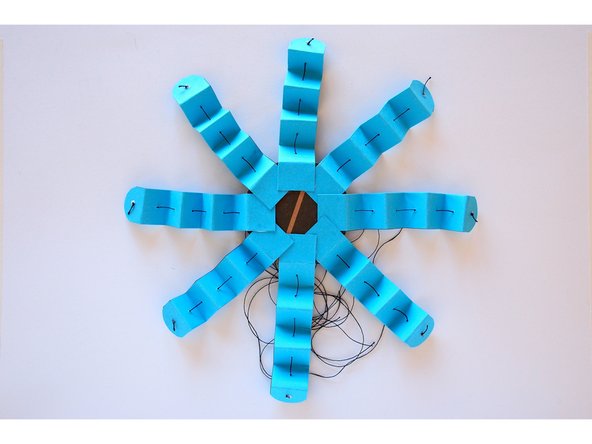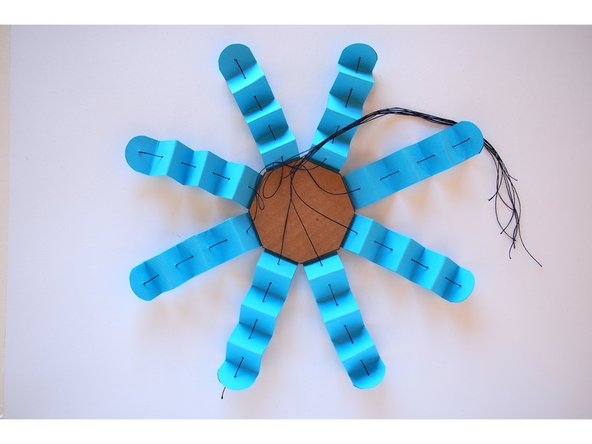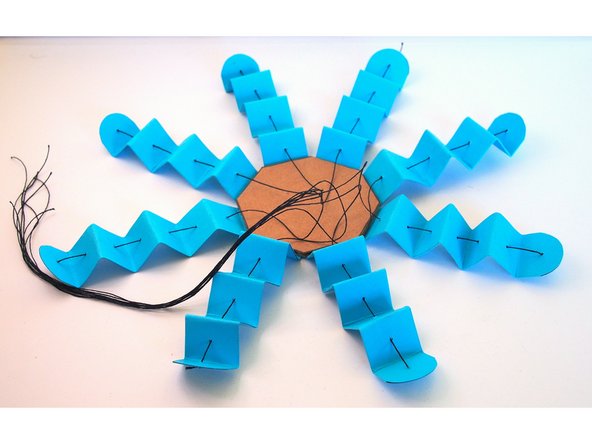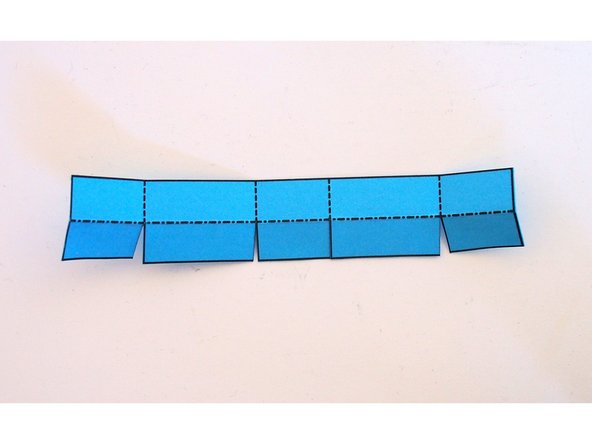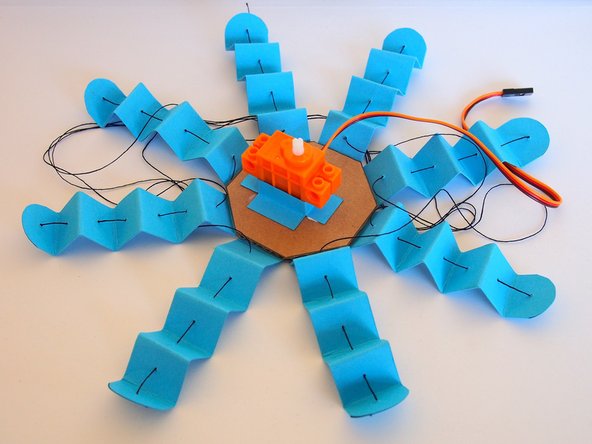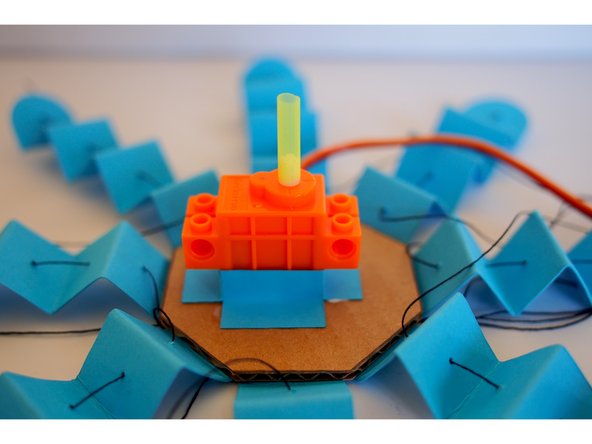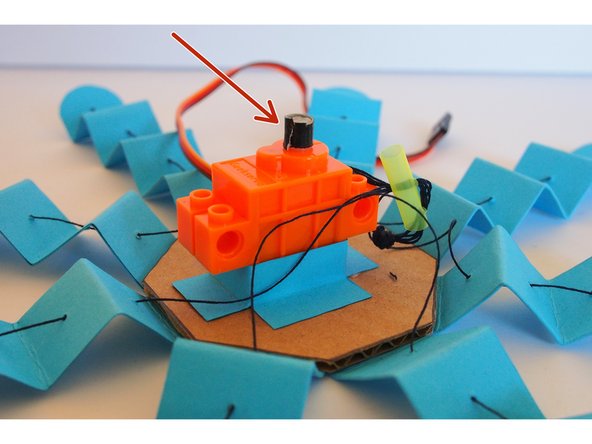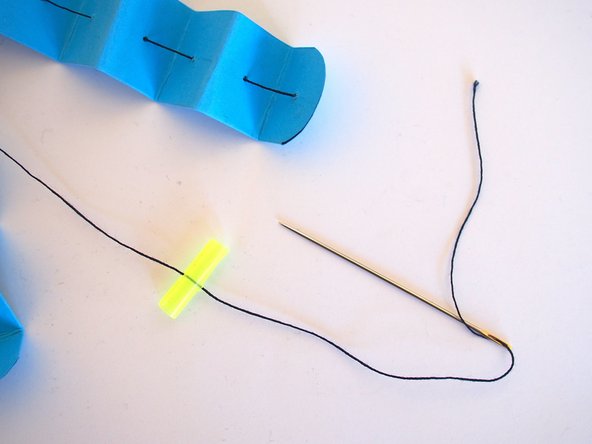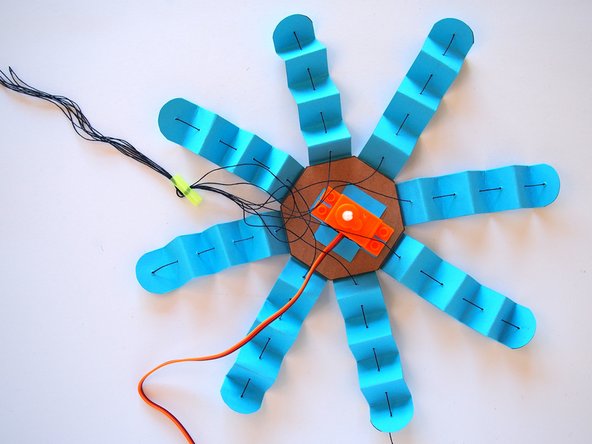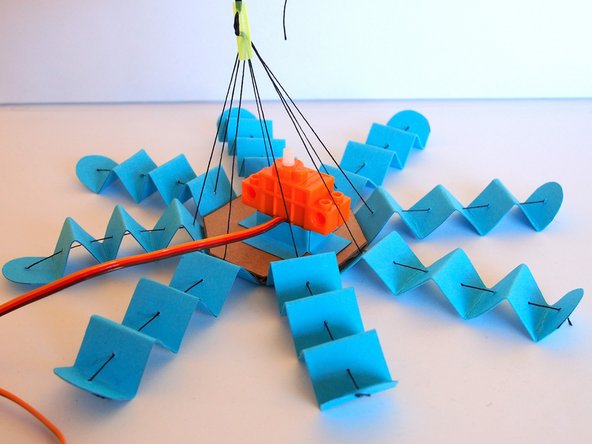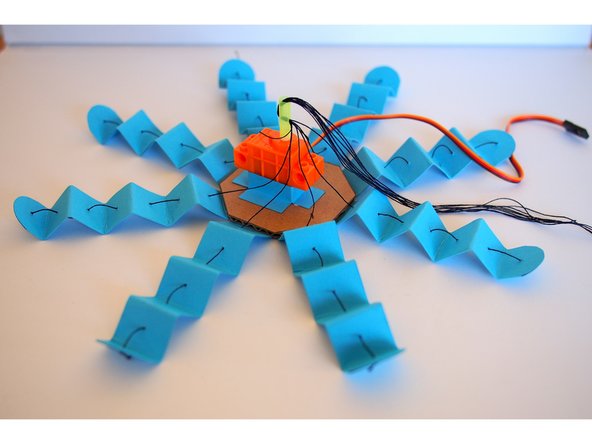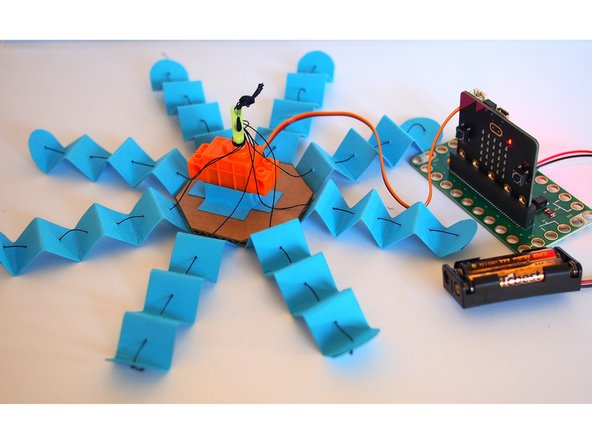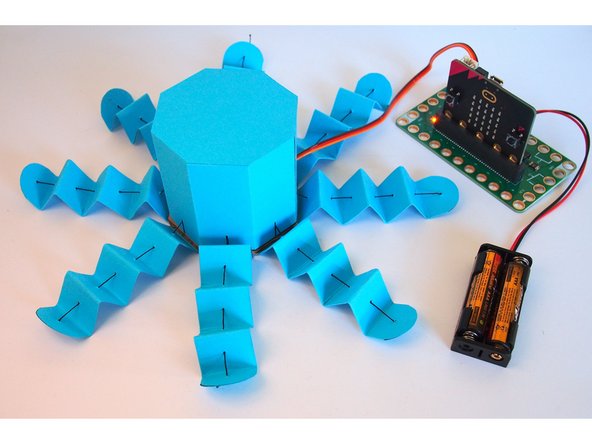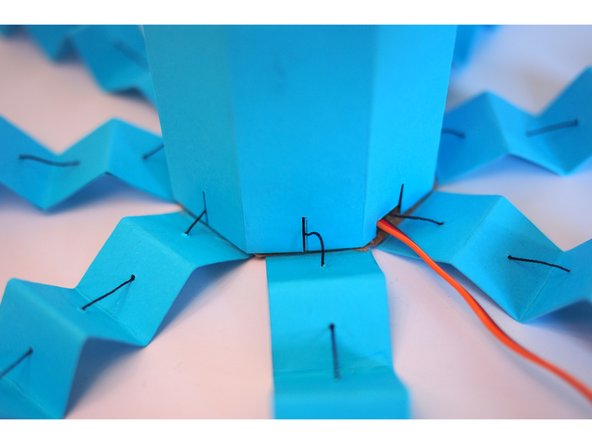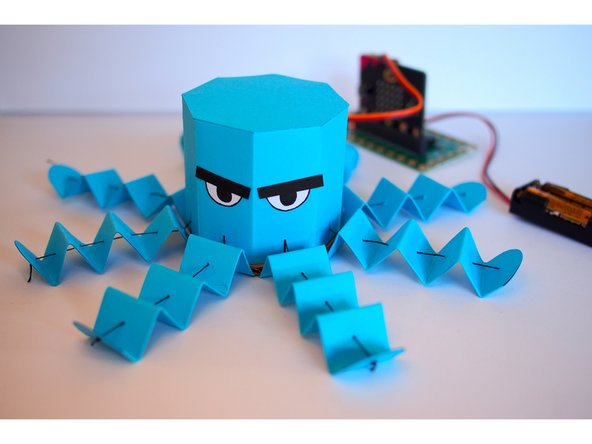Introduction
Make a paper octopus that retracts its tentacles.
Video Overview
Featured Document
-
-
Cut out a tentacle
-
Fold it in half with the template markings on the outside
-
Tip: You can save some time by folding the tentacle in half, then cutting the rounded top part
-
-
-
Use a sewing needle to make the holes in the marked locations
-
Make sure to go through both layers of paper
-
-
-
Fold the tentacle in a zig-zag
-
Unfold the tentacle, then refold it inside out so the template markings are on the inside
-
You can also leave the template markings on the outside if that's your style!
-
Optional: add glue when you fold it in half to hold the two layers together (it's not necessary since it holds its shape pretty well without glue)
-
-
-
Cut a piece of thread around 12" long
-
Double or triple knot the end of the thread
-
Thread the needle
-
-
-
Use the holes you made in step 2 to sew the thread through the tentacle
-
Make sure to start from the rounded end of the tentacle, and on the outside of the zig-zag fold
-
Add a drop of glue (or tape) on the knot to make sure it doesn't pull through the paper
-
Double check that the knotted end is on the rounded side of the tentacle, and the extra thread is on the opposite side
-
-
-
Repeat 7 more times until all 8 tentacles are finished
-
Set the legs aside for now to let the glue dry
-
Are you regretting making a robot with 8 legs? Just be glad it's not a centipede!
-
-
-
Cut out the template for the body and top
-
Fold the body following the markings on the template
-
-
-
Glue the body into an octagon shape (the two sections on either end should overlap on top of each other to form 8 sides)
-
Glue the top on to the tabs
-
Tip: I found it easiest to flip the body upside down while I was gluing the tabs in place
-
-
-
If you're feeling up to a challenge, you can also make the body using the origami method, which results in the twisty-top on this Octobot
-
I used the instructions here to create an Origami Octagonal Box: Origami Octagonal Box
-
-
-
Use the base stencil octagon to trace an octagon onto a piece of cardboard
-
Cut the base octagon out of cardboard
-
The base should be just small enough to fit inside the body (but not so small that there's loads of empty space around it)
-
-
-
Glue a tentacle to the bottom of the cardboard base
-
Only glue the last folded section of the tentacle (the one without a hole)
-
Make sure the thread doesn't accidentally get glued to the cardboard
-
-
-
Repeat for the other 7 tentacles
-
Try to keep the threads from getting tangled
-
-
-
Cut the servo holder template
-
Fold the servo holder
-
Glue it around the servo
-
You don't need to glue the paper to the servo—just wrap the servo holder around the servo, and glue it where the two parts overlap
-
-
-
Glue the servo holder to the cardboard base of the Octobot
-
Note that the servo itself isn't centered on the body—the servo's shaft is what should be approximately centered
-
-
-
Cut a piece of straw about 3/4" long
-
Use the needle to poke a hole through the straw at about halfway between the top and bottom
-
Poke another hole (this one only needs to go through one wall) close to the top of the piece of straw
-
-
-
Put the straw onto the servo shaft
-
Since straws come in all different sizes, it may be too big. If that's the case, put a very small piece of tape around the servo shaft to increase its diameter
-
The straw should fit snugly on the shaft
-
-
-
Sew one of the pieces of thread onto the straw
-
First go through the middle holes, then up out the top
-
-
-
Repeat this 7 more times until all 8 pieces of thread are sewn into the straw
-
It's best to do this one piece of thread at a time to avoid them getting tangled or twisted
-
Check that the length of the thread between the straw and the tentacles is roughly the same
-
You can check this by pulling the piece of straw up to check that the threads are all roughly the same tensions
-
-
-
Push the straw to the servo shaft, making sure it's snug (if it's loose, the shaft will just spin inside the straw without turning the straw itself)
-
Make sure the tentacle are all fully extended, then tie a big knot where the threads exit from the straw
-
Trim the extra thread
-
-
-
Connect the servo to the Bit Board at Servo Pin 1
-
-
-
Upload the code from here: Octobot Code
-
You'll note that the sound activation requires touching the logo at the same time. That's to avoid accidentally triggering it if you're in a noisy environment. You can change that by getting rid of the "logo is pressed" block
-
The sound trigger requires using the micro:bit v2. If you don't have the v2, there's loads of other ways you can trigger the Octobot, such as using the accelerometer to shake the micro:bit, or making it light-sensitive
-
-
-
It's easiest to test the mechanism while the servo is still exposed
-
Use the A and B buttons to try retracting and extending the tentacles
-
Tip: For the TentacleAction function, try playing around with the timing and speed to get different effects
-
Depending on how loose the threads are, you may need to pre-wind the threads around the axle by using the A button before triggering the TentacleAction function
-
-
-
Put the body on
-
The thread should slide into the thin cutouts in the body
-
The servo wire should go through the larger cutout
-
Optional: You can add a bit of glue to secure the body to the cardboard base (I didn't in case I wanted to access the inside)
-
-
-
Give your Octobot a face!
-
Touch the logo and shout "BOO!" to make Octobot retract its tentacles!
-








